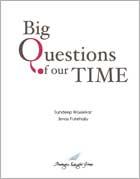Full Speed Ahead: Transport System in the Middle East
|
|
December, 2010
By Shivangi Muttoo
|
Road and rail infrastructure in the Middle East is rapidly improving with new modes of public transport such as the metro, monorail, light rail transit (LRT), bus rapid transit (BRT) being introduced across urban centres in the region. By 2017, the Gulf Cooperation Council (GCC) will have a railway network connecting all the member countries. Modernizing the transport infrastructure has the potential to bring environmental, economic and social benefits to the region.
Cairo Metro, started in 1980s, was the first metro network in the MENA region. By 2020, metro and monorail will become popular modes of mass transport in major cities of the Middle East. The Istanbul Metro known as M2 started full service in 2000. In 2009, Dubai launched the metro and monorail networks. More recently Saudi Arabia started the Makkah Metro that connects the holy sites of Arafat, Muzdalifah and Mina which is expected to facilitate 60,000-80,000 Haj pilgrims every hour. Tel Aviv and Jerusalem will have LRT by 2011 and Abu Dhabi will introduce trams and metro rail by 2016. Cities like Amman and Istanbul are investing heavily in upgrading their road transport facilities by introducing BRT, a public transit system with lanes dedicated exclusively for buses to reduce traffic congestion and travel time. The Amman BRT project will be completed in 2012. A single high capacity bus will carry 120 passengers per trip and run on a 3 minute frequency during peak hours on the busiest streets of Amman.

Rail transport has become the key focus area of GCC infrastructure development plans. The proposed GCC rail network, which will have both passenger and cargo train tracks, will link all the GCC nations from Kuwait to Oman via Saudi Arabia, Bahrain, Qatar and the UAE. The rail network is aimed at reducing the travel time between major cities and creating a regional link.
Improvements in transport infrastructure will undoubtedly have a positive impact on the environment. According to the Gulf Research Centre (GRC), such initiatives have the potential to reduce the current number of cars by 30%. Reducing vehicular traffic will bring down carbon dioxide (CO2) emissions and improve the quality of air. The transport sector contributes 10-12% of the total CO2 emissions in the region. The GRC calculated that the Dubai Metro will reduce CO2 emissions by 1.6 million metric tons in the coming years. The regional rail network is expected to cut carbon emissions per passenger by up to 90% when compared with air travel.
Development of transport infrastructure will boost the Middle East economy. Transport projects worth USD 170 billion are underway in the region. The rail sector is expected to grow rapidly in the coming years as freight rail companies and locomotive manufacturing units may come up in the region. The pan GCC railways will significantly boost trade and tourism. Rail network will link remote industries and ports with the major commercial cities. These developments will spur job creation and will aid in addressing the serious problem of unemployment. Even the construction and maintenance of the new modes of transport such as the metro requires huge manpower. Dubai Metro employed around 30,000 construction workers and more than 6000 people are managing the operations and maintenance of the Metro.
The new modes of transport are likely to increase the use of public transport and save fuel in the future. The 35-40km BRT corridor in Istanbul has reduced the fuel usage by more than 20,000 litres per year. The initiatives which are large scale such as the metro, monorail and LRT will probably save more fuel per year.
The transport network is connecting the outskirts and remote areas with main cities and therefore has the potential to reduce spatial disparity in the coming years. Around 61% of the population in the region lives within 3 hours of a major city. The Middle East also suffers from the lack of rural accessibility. The expansion and improvement in transport infrastructure will increase the access to health and education facilities for the people living on the outskirts of cities and in rural areas.
The MENA region is rapidly urbanizing. More than 300 million or half of the population in the region lives in cities. By 2020, MENA�€™s urban population is set to grow by 25%. Over 80% of the population in GCC countries reside in cities. Urbanization makes it important for large cities to have a safe and efficient public transport system. The region has already recognized the need and embarked on major projects to improve urban transportation in major cities. The Middle East is fast steering towards new and improved mass transport which is likely make the urban centres of the region more liveable in the future.
Related Publications
-
.jpg&maxw=50)
Big Questions of Our time: The World Speaks, 2016
Download:Big Questions of Our time: The World Speaks _Full Report
-

-

Second Freedom South Asian Challenge 2005-2025, 2005
read more
Download:Second Freedom South Asian Challenge 2005-2025 Full Report
Related latest News
Related Conferences Reports
-

Global Challenges Conference, October 2016
Download:Global Challenges Conference Report
-

Conference on Responsibility to the Future: Business, Peace and Sustainability, June, 2008
Download:Global Security and Economy: Emerging Issues


